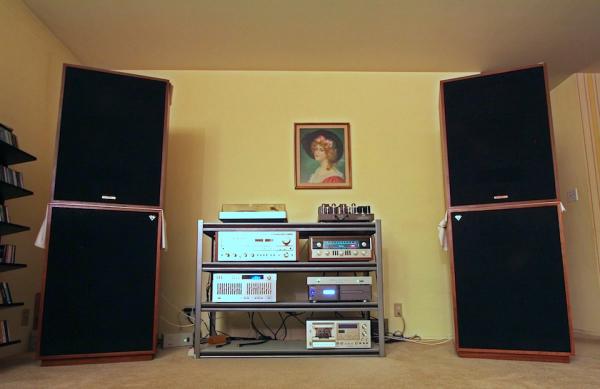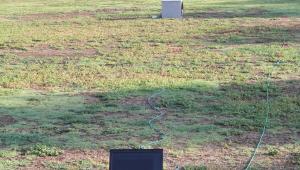Reel Audio: The Klipsch Tapes on CD

Back in the mid-1950s, there weren’t a whole lot of stereo recordings available. How, then, could an audio engineer evaluate the equipment he was designing? For Paul Klipsch, founder of Klipsch Speakers, the answer was to make his own recordings. For the purest possible sound quality, his rig bypassed the microphone transformers and used no EQ or tone controls.
In 1956, Klipsch founded KlipschTape, a division that sold copies of his recordings on reel-to-reel tape so consumers could have high-quality reference material. The effort lasted only two years, though, and the tapes were soon forgotten. But two years ago, Jim Hunter, curator of the Klipsch Museum of Audio History, found the collection in storage. He collaborated with High Definition Tape Transfers to bring the best of Klipsch’s orginal tapes back to market. They’re now available on digital formats ranging from CD to 24/192 FLAC downloads, at prices from $7.99 to $36.50.
I got a chance to check out the KlipschTape CD, which features seven pipe organ recordings, four Dixieland group recordings, and a modern jazz group recording. To my surprise, I saw that the performer on all but one of the organ recordings was John Eargle, who later became an acclaimed recording engineer and author of numerous books on audio. The CD also includes the audio from a fascinating TV interview with Paul Klipsch himself — recorded way back in 1954, a day when high-fidelity sound barely existed.
As luck would have it, I happened to get the CD the day before I left for a trip to Vancouver, British Columbia, to visit Gordon Sauck, owner/founder of Innovative Audio, one of the world’s largest vintage audio dealers. Listening to the CD while driving up, I was surprised at the clarity of the nearly 60-year-old recordings. But I thought I’d get a better perspective if I could hear them on Sauck’s own set of Klipschorns. It turned out he’d moved on to some Altec Lansings, but he offered to drive me to the nearby home of one of his customers, Marc Carriere, who had two pairs of vintage Klipsch Cornwall speakers set up in his living room.
It turned out Carriere is a longtime Klipsch devotee who collects and restores pre-1975 models. When I asked him how many he owns, he replied, “I don’t know, five or six or seven pairs.” Not surprisingly, he was as eager to hear the CD as Sauck and I were. We played several cuts using a classic Pioneer SX-1980 receiver driving stacked Cornwalls (with the top ones inverted), then Carriere switched out to a system with a McIntosh MX-110 preamp feeding a heavily modded Eico HF-87 tube amp, driving just one pair of Cornwalls.
“This is a real treat,” Sauck noted. “We’re listening to almost 60-year-old recordings on 40-year-old speakers driven by 35-year-old electronics.”
The CD preserves the old-school feel of the original tapes, complete with the original recorded track announcements (in the right channel only, no less) and a copy of the original typewritten technical notes, which go into detail about how the recordings were made.
We were all blown away by the quality of the sound of Klipsch’s decades-old recordings. Even though stereo recording techniques weren’t as established as they would become in later decades, Klipsch’s tapes beautifully captured the ambience of the concert halls in the organ recordings. They also delivered surprisingly precise stereo imaging of the various instruments in the Dixieland band. The deepest notes of Eargle’s performances gave the Cornwalls’ 15-inch woofers a hell of a workout `— something I didn’t expect from a mid-1950s tape recording, much less from a tube amp. (“There goes your theory about [vintage] Klipsches not having any bass,” Carriere chided Sauck.) And while we all expected to hear lots of tape hiss, it was just barely audible.
Most important, though, the KlipschTapes CD gave us a taste of what it was like to be a hi-fi enthusiast back in the era when the whole thing was just getting started. If you’re interested in audio history — or just curious about what a reference-grade recording of the 1950s sounds like — I highly recommend you pick up a copy.
- Log in or register to post comments
























































